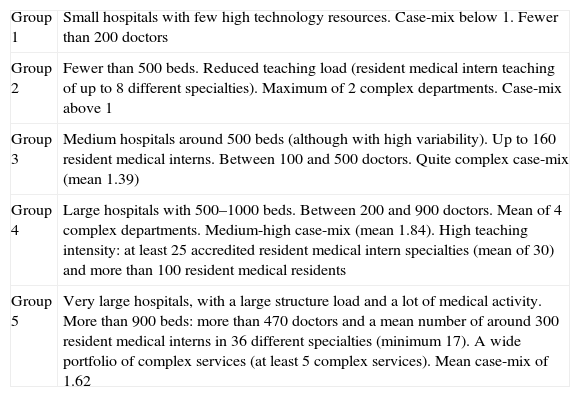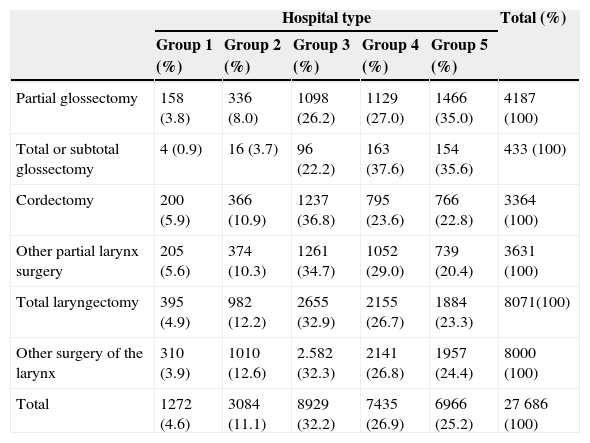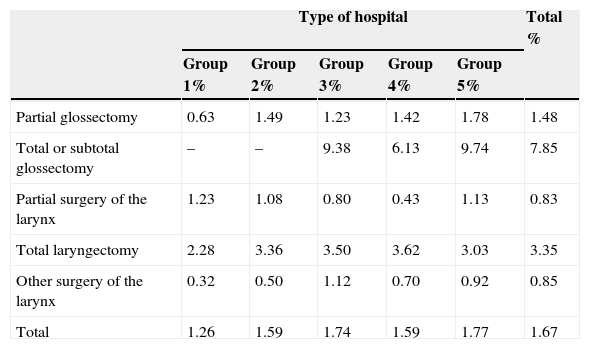Surgery is one of the basic pillars in the treatment of patients with head and neck squamous cell carcinoma (HNSCC). The objective of the present study was to analyze the current state of the use of surgery in patients with HNSCC in Spain.
MethodsRetrospective review of the hospital discharge reports of the patients with HNSCC treated surgically during the 2006–2011 period in Spain. We obtained the data from the Minimum Basic Data Set during the hospital discharge.
ResultsWe obtained information on 26629 hospital discharges, with a total of 27937 surgical procedures. Overall, in our country about half of the patients with HNSCC receive surgical treatment of the primary tumour location. There were no significant changes in the number of surgical procedures throughout the study period. There was a smooth downward trend in the number and percentage of surgeries carried out in male patients, and a significant increase in those carried out in female patients throughout the study period. Among the total of surgical procedures, 15.7% were carried out in hospitals with a low level of complexity, 32.2% in hospitals with an intermediate complexity and 52.1% in centres of high complexity.
ConclusionsSurgery is one essential pillar in the treatment of patients with HNSCC. In Spain about half of the patients with HNSCC receive surgical treatment for the primary location of the tumour.
La cirugía es uno de los pilares básicos en el tratamiento de los pacientes con carcinomas escamosos de cabeza y cuello (CECC). El objetivo del presente estudio es analizar el estado actual del uso de la cirugía en este tipo de pacientes en España.
MétodosRevisión retrospectiva de las altas hospitalarias de los pacientes con CECC tratados quirúrgicamente durante el periodo 2006-2011 en España a partir de los datos obtenidos del Conjunto Mínimo Básico de Datos al Alta Hospitalaria (CMBD).
ResultadosSe recogió información correspondiente a 26.629 altas hospitalarias, con un total de 27.937 procedimientos. Globalmente, en nuestro país la mitad de los pacientes con un CECC reciben un tratamiento quirúrgico sobre la localización primaria del tumour. No se produjeron modificaciones significativas en el número de procedimientos a lo largo del periodo de estudio. Apareció una suave tendencia hacia la disminución en el número y porcentaje de cirugías realizadas en pacientes del sexo masculino, y un elevado incremento para las pacientes del sexo femenino a lo largo del periodo de estudio. Del total de procedimientos realizados, un 15,7% se realizaron en centros hospitalarios de nivel de complejidad bajo, un 32,2% en los de complejidad intermedia, y un 52,1% en centros de alta complejidad.
ConclusionesLa cirugía constituye un pilar fundamental en el tratamiento de los pacientes con un CECC. En España, aproximadamente la mitad de los pacientes con un CECC reciben un tratamiento quirúrgico sobre la localización primaria del tumour.













